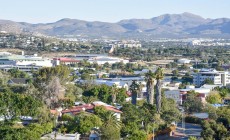-
Latin America
Latin America
- Countries (hidden space)
- Galapagos & Ecuador
- Guatemala
- Mexico
- Panama
- Peru
- Popular Attractions
- Machu Picchu
- Inca Trail
- Easter Island
- Galapagos Islands
- Patagonia
- Rio de Janeiro
- Iguazu Falls
-
Africa
Africa
- Spacer Africa
- South Africa
- Zimbabwe
- Popular Attractions
- Cape Town
- Okavango Delta
- Sossusvlei Dunes
- Victoria Falls
- The Kruger
- The Garden Route
- Masai Mara
-
Asia & Middle East
Asia & Middle East
- Asia
- Borneo (Malaysia)
- Cambodia
- India
- Japan
- Middle East
- Jordan
- Spacer Asia
- Laos
- Sri Lanka
- Uzbekistan
- Vietnam
- Popular Attractions
- Taj Mahal
- Lion Rock (Sigiriya)
- Angkor Wat
- Ha Long Bay
- Kyoto
- Petra
-
Destinations
- Latin America
- Argentina
- Bolivia
- Brazil
- Chile
- Colombia
- Costa Rica
- Galapagos & Ecuador
- Guatemala
- Mexico
- Panama
- Peru
- Asia
- Borneo (Malaysia)
- Cambodia
- India
- Japan
- Laos
- Sri Lanka
- Uzbekistan
- Vietnam
- Middle East
- Jordan
- Southern & East Africa
- Botswana
- Kenya
- Namibia
- South Africa
- Zimbabwe
- Contact Us
-
About
About
Llama Travel provides high quality holidays at the lowest possible prices.
99% recommend us Lower prices - guaranteed Financially protected by ATOL
Somewhere near the centre of the country you’ll find the capital city of Windhoek (pronounced vint-hook). A small oasis in the middle of a large desert, Windhoek can be considered a bustling metropolis only in comparison to the surrounding nothingness. It is a small, quiet city by international standards.
The influence of the German colonial times can still be seen today in restaurants, street names, cuisine and festivals. Historic places of interest include the Christ Church; a Lutheran church constructed from quartz sandstone during the wars between the Germans and the indigenous groups. The Tintenpalast (meaning “Ink Palace” in honour of the excessive ink usage by the workers in the building) is the Namibian parliament building which was built by Herero and Nama people, having survived the Herero and Namaqua genocide.
Windhoek’s history is as diverse as its people. The San (Bushmen) already populated the area around Windhoek thousands of years ago. Due to the hot springs near the city, the Orlam people settled in the area around 1850, and later the Dutch settlers from the Cape Colony built a church which was also used as a school. A town soon developed, but was destroyed by wars between the Nama and Herero, so that by 1873 nothing was left of it. The Herero were originally a group of cattle herds who occupied Damaraland, and the Nama were traders living to the south of them. In 1884, a declaration of a German protectorate over German South West Africa was issued. A German colony was then established which retained its power up until the First World War, when South African troops marched into Windhoek and claimed the area on behalf of Britain. Development of the city was largely halted during this period, up until after the Second World War when the expansion efforts were once again resumed. Namibia gained independence from South Africa in 1990, and the South African government recognised Windhoek as the nation’s capital.

